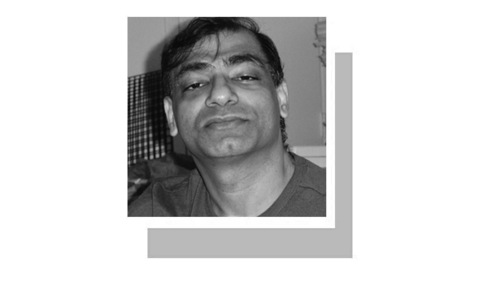
IT is commonly believed that arts are at loggerheads with science. So is spirituality. Apparently it may sound a bit bizarre, but a scientist can be a poet, too, albeit it would be a bit difficult for a poet to be a scientist. Saleemuz Zaman Siddiqi (1897-1994), one of our most revered scientists, is a case in point: he was also a poet, painter and musician, but he was a scientist first.
Aside from the debate why science is incomplete without poetry, spiritual matters are considered beyond the bounds of science as science believes in matter and physical existence while spiritual world is based on metaphysics. In a broad sense, mathematics is a branch of science and there was a strange fellow, named Khwaja Dil Muhammad, who was a well-known mathematician yet he was a talented poet with a zest for translating and versifying the spiritual texts.
Khwaja Dil Muhammad was a poet, translator, educator, textbook writer, lexicographer and a mathematician. Born in Lahore on Feb 9, 1887, Khwaja Dil Muhammad was educated in traditional oriental knowledge first and then he did his MA in mathematics from Government College, Lahore. He began teaching at Lahore’s Islamia College as a lecturer of mathematics in 1907, wrote Lala Siri Ram in volume three of his Khum Khana-i-Javed (page 188). Dil retired as principal in 1944.
He wrote some 30 books on mathematics. His maths and algebra textbooks, written in Urdu and titled Dil Ka Hindsa and Dil Ka Algebra, were very popular and had run into many editions. What made him stand out as a poet among his contemporaries was his ability to compose poetry in two genres of Urdu that are considered rather difficult: ruba’i and doha.
Ruba’i, or quatrain, is considered a difficult genre to master as it must be composed in specific 24 metres and poets have just four lines to say whatever they want to say. Khwaja Dil Muhammad’s book Sad Para-i-Dil (1946) has 500 quatrains. This sheer number of quatrains would make any poet of Urdu envy as very few Urdu poets have composed quatrains in such a large number.
Doha is another genre with its own distinctive qualities. It is a stand-alone, two-line pithy poem in Hindi and Urdu, traditionally used effectively for getting spiritual, moral and worldly-wise messages across, albeit latter-day poets such as Khwaja Dil Muhammad and Jameeluddin Aali wrote dohas conveying love themes, too. Originally composed by Hindu ascetics or saints, known as sadhu and rishi, doha was meant to convey mystical or esoteric knowledge, emphasising the ephemeral nature of this world.
But doha is not an easy composition as it demands a specific behr, or metre, peculiar Hindi diction and an ability on the part of the poet to say something worth saying in just two lines. Dil’s book Peet Ki Reet is a collection of dohas that successfully captured the essence of doha. Dil had tried to revive the genre in Urdu as it had long been unpopular, however, critics generally did not take much notice of the book. Dil was least bothered as he did not compose poetry for any recognition but to spread a message and his message was moral and spiritual values and a harmony among the followers of parallel religious narratives.
Dil Muhammad was a person who lived life according to his own ideals. His composing doha in Hindi tradition reveals that he had studied, along with Islamic branches of knowledge, other religions, especially Hinduism and Sikhism. So when he published Dil Ki Geeta, a versified Urdu translation of Bhagwat Geeta, a Hindu scripture, it became very popular as it is in easy Urdu and gives explanations and meanings in footnotes. It ran into several editions and a new edition from India was published in 2004. Dil’s versified translation of Jap Ji Aur Sukhmani Sahab (1946), prayers presented in Guru Granth Sahib, the scripture of Sikh religion, is in easy Urdu. It has also been published from India in Gurumukhi script.
On the other hand, Dil was a devout Muslim and versified in Urdu the basic concepts of Sura Fateha and named it Rooh-i-Quran. He would recite his moral and nationalistic poems at Anjuman Himayat-i-Islam’s annul gatherings. Such poems, published in the form of pamphlets by the Anjuman, include Qibla Numa, also named N’ara-i-Tauheed, Isaar-i-Muslim, Darbar-i-Rasool and some others. Dard-i-Dil is a collection of his nationalistic poems. Aaina-i-Akhlaq (1945) is a collection of versified moral teachings. Bostan-i-Adab (1946) consists of selections from Urdu prose and poetry for the students of primary and lower secondary classes, which Dil compiled in two parts. Dil’s Gulzaar-i-Maani, a 1680-page Urdu-Urdu dictionary, is another proof of his mastery over the language.
Khwaja Dil Muhammad died in Lahore on May 27, 1961.
Published in Dawn, May 20th, 2024













































Dear visitor, the comments section is undergoing an overhaul and will return soon.